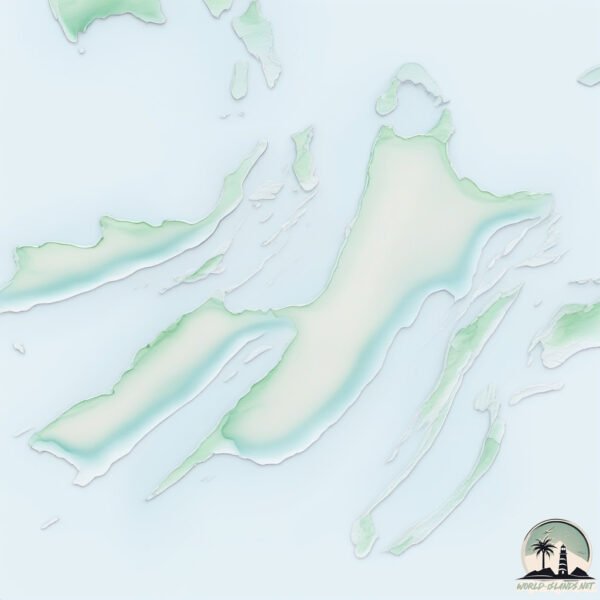Welcome to Flaherty , a Polar island in the Hudson Bay, part of the majestic Arctic Ocean. This guide offers a comprehensive overview of what makes Flaherty unique – from its geography and climate to its population, infrastructure, and beyond. Dive into the details:
Geography and size of Flaherty
Size: 1862 km²Coastline: 1232 kmOcean: Arctic OceanSea: Hudson BayContinent: North America
Flaherty is a Very Large Island spanning 1862 km² with a coastline of 1232 km.
Archipel: Belcher Islands – A group of islands in Canada’s Hudson Bay, known for their remote location and unique Inuit culture.
Tectonic Plate: North America – Covers North America and parts of the Atlantic and Arctic Oceans, characterized by diverse geological features and varying levels of seismic activity.
The geographic heart of the island is pinpointed at these coordinates:
Climate and weather of Flaherty
Climate Zone: PolarClimate Details: TundraTemperature: Cold
Climate Characteristics: The tundra climate features long, extremely cold winters and short, cool summers. Vegetation is limited to mosses, lichens, and small shrubs due to the low temperatures and short growing seasons. Biodiversity is low, but some specialized species thrive.
Topography and nature of Flaherty
Timezone: UTC-05:00Timezone places: America/New_YorkMax. Elevation: 109 m Mean Elevation: 28 mVegetation: Herbaceous CoverTree Coverage: 51%
The mean elevation is 28 m. The highest elevation on the island reaches approximately 109 meters above sea level. The island is characterized by Plains: Flat, low-lying lands characterized by a maximum elevation of up to 200 meters. On islands, plains are typically coastal lowlands or central flat areas.
Dominating Vegetation: Herbaceous Cover
Vegetation: 7 vegetation zones – Very Highly Diverse Island
Infrastructure and Travelling to Flaherty
Does the island have a public airport? yes .
Does the island have a major port? no .
The mean population of Flaherty is 0 per km². Flaherty is Uninhabited. The island belongs to Canada .
Continuing your journey, Renouf is the next notable island, situated merely km away.
Hudson Bay’s Oddly Shaped Island Archipelago | Canada's Strangest Islands: Part 2 | Belcher Islands
In this video we talk about the Belcher Islands, including its unique geography, and grisly history, on this edition of Canada's ...
Hudson Bay’s Oddly Shaped Island Archipelago | Canada's Strangest Islands: Part 2 | Belcher Islands
In this video we talk about the Belcher Islands, including its unique ...
In this video we talk about the Belcher Islands, including its unique geography, and grisly history, on this edition of Canada's ...
Charlie Ouyerack & Peter Sala : The Belcher Islands Massacre
After Christianity was brought to the Inuit people of the Belcher ...
After Christianity was brought to the Inuit people of the Belcher Islands, Charlie Ouyerack & Peter Sala proclaimed themselves as ...
KD6WW/VY0 K9AJ/VY0 Flaherty Island Belcher Islands. From dxnews.com
KD6WW and K9AJ will be active from Flaherty Island, Belcher Islands, ...
KD6WW and K9AJ will be active from Flaherty Island, Belcher Islands, IOTA NA - 159, 26 - 29 August 2016 as KD6WW/VY0 and ...
Canada is classified as Developed region: G7: Group of Seven – Major advanced economies, including Canada, France, Germany, Italy, Japan, the United Kingdom, and the United States. The level of income is High income: OECD.
News – Latest Updates and Headlines from Flaherty
Stay informed with the most recent news and important headlines from Flaherty. Here’s a roundup of the latest developments.
Loading...
Social Media Posts about Flaherty
Loading...
Please note: The data used here has been primarily extracted from satellite readings. Deviations from exact values may occur, particularly regarding the height of elevations and population density. Land area and coastline measurements refer to average values at mean high tide.

